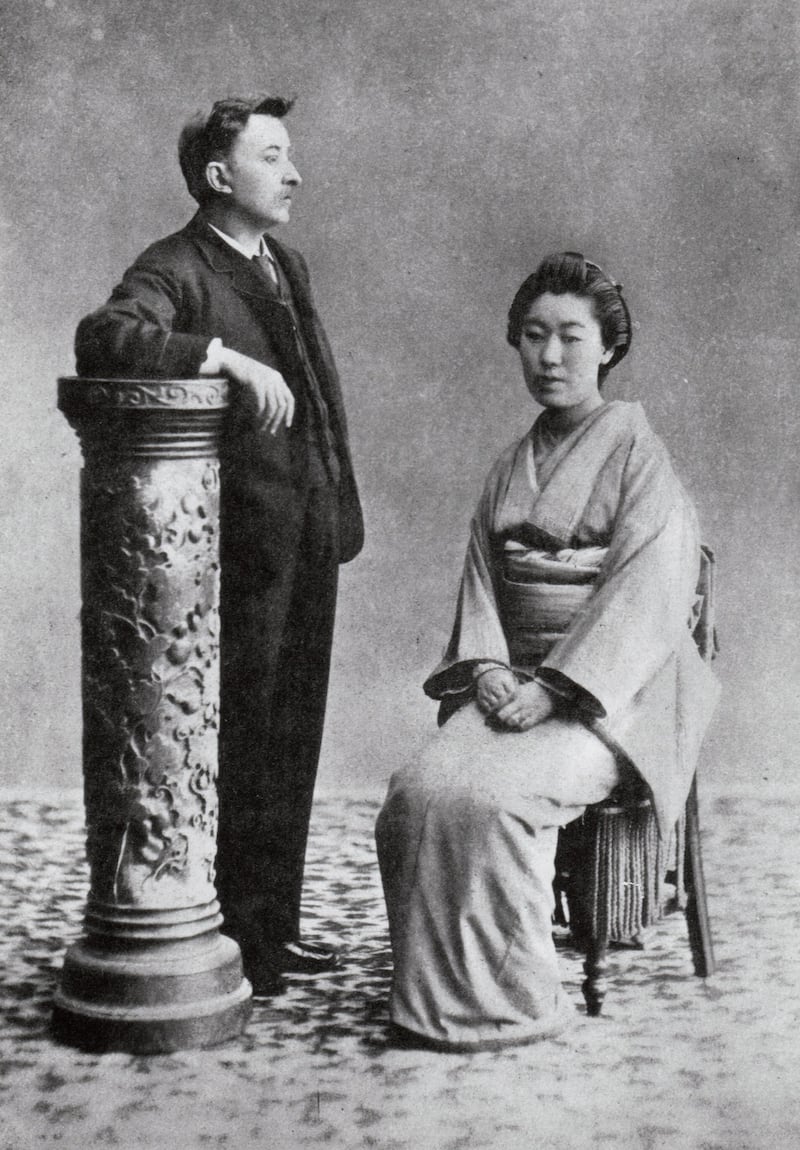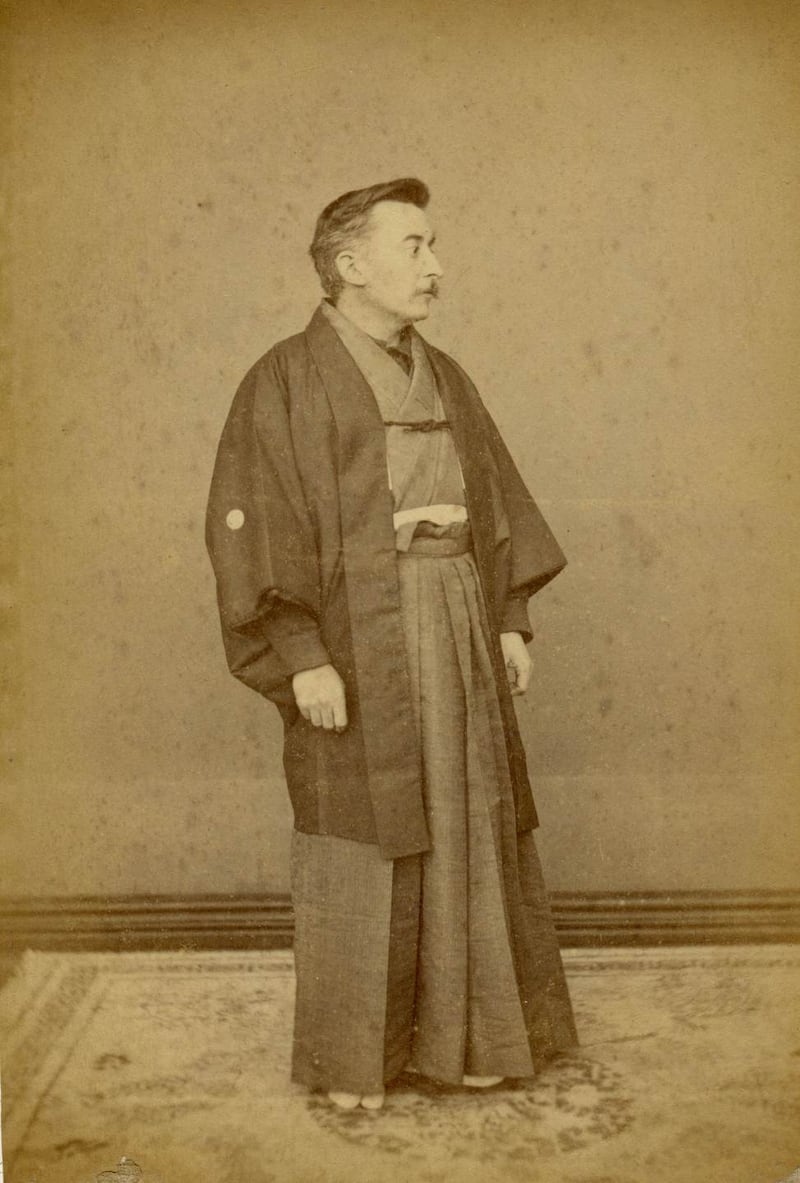Last October I was asked by UCD’s Japan Group to give a presentation on the writer Lafcadio Hearn (1850-1904), who was born in Greece and died in Japan. I suggested a tongue-in-cheek title: We Need to Talk about Patrick Lafcadio Hearn. It’s an interesting fact that, even though there was no obvious clash with another notable event on campus that evening, just three people attended – not counting the organisers or the respondent (Paul Murray, Hearn’s most important biographer). Thanks to the enthusiasm of all those present, there was a compelling conversation. Still, this tiny turnout suggests that not too many people, in Ireland or UCD at least, think that Hearn is, in fact, worth talking about. In this, though, we are out of sync with the rest of the world, more especially with all of Japan and parts of the USA, the Caribbean and France, places where Hearn’s work is recognised as mattering… a lot.

Hearn’s life was lived on a global scale, as illustrated by his two marriages – first to an African American, a former Kentucky slave, then to a Japanese woman with samurai connections. As for his work, it engaged deeply not just with multilingualism, but with intercontinentalism, creolisation, transnationalism and transculturalism. This Dublin-raised, Durham-educated, multiply abandoned, doubly orphaned son of an Anglo-Irish surgeon in the British army and an unstable Greek mother, was above all a profoundly homeless “non-national”. He lived as a writer in Cincinnati, New Orleans and Martinique before moving to Japan, where he died about fourteen years later of a worn-out heart.
It is that critical homelessness that makes of Hearn’s trajectory the opposite of an Odyssey (for there was – for him – no home to return to). Similarly, it’s thanks to his mixed and fractured origins that his writings are orphaned works, works still sending out vital signals that Ireland’s over-greased radar has, most tellingly, more missed than registered.
The fact is that neither Hearn nor his work can be plausibly claimed as any one nation’s or culture’s “intellectual property”, there to be promoted and capitalised upon. Indeed, Hearn cannot be seen as a European or “Old World” writer any more than as an American or “New World” author. And here, perhaps, lies the chief explanation of his relative neglect in Ireland. We don’t know what to make of him and even less, what we could make out of him… He was not just a sui generis writer, as most important authors are, nor even a transnational writer, but rather a “one-world writer” or a “global mind” avant la lettre. He was in that sense ahead of his time: a translingual, hyphenated Greco-Anglo-Irish francophile, who believed not just that “black lives mattered”, but that the world was a much bigger place than Ireland or even Europe and their brave and not so brave “new world” extensions. If we absolutely have to pigeonhole or “brand” Hearn, it would have to be less, then, as an “Old World” or as “New World” figure than as a “fundamental migrant”, an absolutely homeless storyteller, who dwelled long enough in the American South, the Caribbean and Japan to be able to translate these worlds into words.

Despite our aforementioned radar issues, Ireland has been fortunate in having had some extraordinary literary antennae work on registering Hearn's "one-world" story here, surely a story for our own troubled times. In addition to the work done by Lafcadio Hearn afficionados and scholars such as Paul Murray (also a scholar of Bram Stoker ), by John Moran for The Irish Times and by Simon O'Connor (who curated an exhbition on Hearn in 2015 at the Little Museum), Ireland's very active Japanese community has been tirelessly striving to raise Hearn's visibility here.
More recently, however, the Fáilte Ireland-owned Dublin Writers Museum acquired last autumn a most significant collection of Hearn material, which is currently on show there. It would be difficult to overestimate the sensitivity with which the erudite keeper of that museum has curated this exhibition. Robert Nicholson, long one of Dublin’s chief cultural treasures, has done a most meticulous and illuminating job of displaying and explaining the Hearn material donated by the New York-based Greek art dealer and outstanding Hearn collector-patron, Takis Efstathiou.
Nobody could visit this jewel of a narrative without emerging with a very clear sense of exactly why Lafcadio Hearn matters as a writer, a writer who happens to have once called Dublin “home”. As the moving responses in the museum’s visitor’s books clearly show, Nicholson has managed to map Hearn’s entire journey with a lightness and sureness of touch underwritten by decades of experience in the art of pitch-perfect literary and cultural mediation (he is also the curator of the James Joyce Tower and Museum in Sandycove).
A further stroke of luck – for literary Ireland in general and for Hearn’s legacy in particular – hinges on another exceptionally intuitive individual, Agnes Aylward, whose uncanny grasp of Hearn’s full significance has given us the Lafcadio Hearn Garden in Tramore. Aylward has created there a permanent, magical, living space, a “world garden” in which visitors can gain a deep appreciation of this global figure and of the various parts of the world, including Ireland, that gave him shelter throughout his life.
Nicholson and Aylward are more than mere intermediaries, translators or curators. They are mediums. Both have made audible for the world at large, for visitors to Ireland, for literary and cultural tourists, for Ireland’s own readers, for literary fans and critics and scholars without distinction, the spirit of a writer who (for a time at least) had a close connection with Ireland.
Whereas the Lafcadio Hearn Japanese Gardens in Tramore are open to visitors all year round (www.lafcadiohearngardens.com), the Hearn exhibition at the Dublin Writers Museum will be closing at the end of March 2018 to make space for other delights. It's something not to miss. (Dublin Writers Museum, 18 Parnell Square, Dublin Writers Museum).
Mary Gallagher is Professor of French and Francophone Studies in UCD's School of Languages, Cultures and Linguistics

















